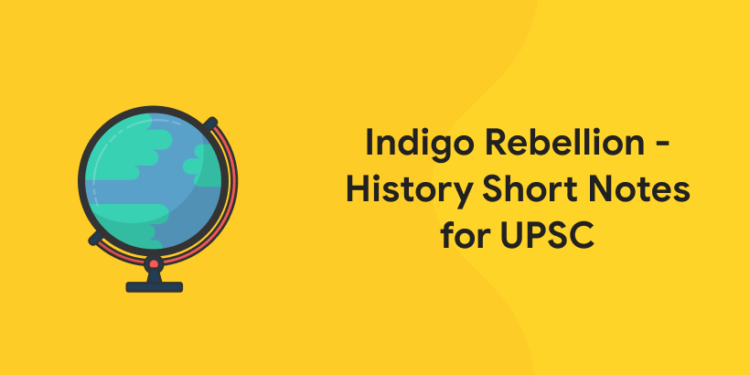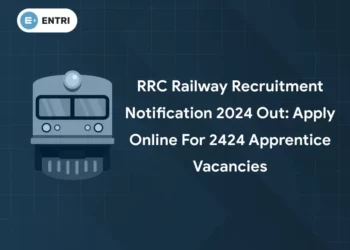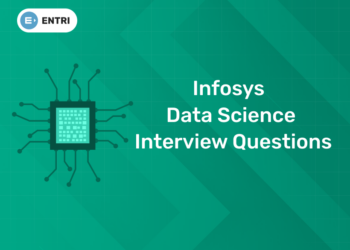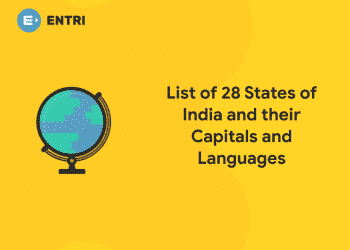Table of Contents
The Indigo revolt was a movement by the Indian peasants which led to a subsequent uprising of indigo farmers against indigo planters that broke out in 1859 in Chaugacha village of Nadia, Bengal. The most militant and significant of the peasant movements was the Indigo Revolt which took place in the year 1859-60. The Indian farmers were forced to plant indigo, which was refined in factories set up by indigo planters, almost everyone of whom were Europeans, in the village regions. From the start, indigo was cultivated under an extremely tyrannous condition, resulting in a great loss for the peasants. In this blog, we will discuss the Indigo Revolt (1859-60) which can be used as notes for the UPSC exam preparation.
 Background of the Revolt
Background of the Revolt
- Indigo cultivation in Bengal began in the 1777, when a Frenchman named Louis Bonnaud presented it to the Indian landmass. He was the first one to plant indigo in Bengal, growing this plant in Taldanga and Goalpara near Hooghly.
- With the Nawabs of Bengal who dominated the Company, indigo cultivation became increasingly commercially profitable due to Europe’s demand for blue dye. It was made available in major parts of Bankura, Birbhum, Burdwan, North 24 Parganas, and Jessore (a portion of present-day Bangladesh).
- Indigo planters manipulated the farmers to plant indigo rather than edible crops on their own lands. They offered loans, called dadon, at unbelievable interest rates.
- Once a peasant took such loans, he was in debt for the rest of his life before passing it on to his proge
- The planters gave a payment of 5 percent of the market price only. Hence, Growing indigo would not be profitable for the farmers.
- The farmers were completely exposed to the indigo planters, who threatened them with mortgages or property destruction if they did not agree to obey them. The planters benefited from government policies that were in their favour.
- The planters were given an upper hand in dealing with the peasants by an act passed in 1833. The zamindars, who also benefited from the indigo cultivation supported the planters. Farmers began a revolt in response to these conditions.
Attempt free GK Mock Test! Download Entri App!
Features of Indigo Revolt
- Indigo cultivation began in the year 1777 in Bengal.
- Indigo was very popular all over the world. As a result of Europe’s demand for blue dye, indigo trade became highly
- Farmers were forced to grow Indigo instead of food crops by the cultivators.
- If a farmer didn’t agree to grow indigo and instead planted food crops like paddy, the cultivators resorted to criminal means such as burning and looting crops, kidnapping the members of farmer’s family, and so on to get the farmer to grow indigo.
- The Indigo Revolt was a peasant movement which led to the subsequent uprising of indigo farmers over the indigo planters that began in 1859 in Chaugacha village of Nadia in
Main Causes of the Indigo Revolt
- Indigo planters convinced peasants to plant indigo instead of food crops. They provided loans, also called dadon, at unreasonably high interest rates.
- Once a peasant took out such loans, he was in debt for the rest of his life before passing it on to his progeny.
- The planters gave a payment of 5 percent of the market price only. Cultivating indigo was not gainful for the farmers.
- The farmers were completely unsafe from the indigo planters, who tortured them with mortgages or property destruction if they refused to obey them.
- The cultivators mainly the Europeans benefited from government policies that favoured them. The planters were given a free hand to oppress the farmers by an act passed in 1833. Even the zamindars were with the planters.
The Spread of the Indigo Revolt
- The revolt began in the Gobindapur and Chanugacha villages in Krishnanagar, Nadia district of Bengal, where Bishnucharan Biswas and Digambar Biswas where the leaders of the first rebellion against the European planters in Bengal in 1859.
- It quickly extended through Murshidabad, Pabna, Khulna, Birbhum, Burdwan, and Narail. A public trial was conducted for some indigo planters, and they were Killed (executed).
- The indigo depots were burnt to ashes by fire. Many planters fled to save themselves from the angry revolters. The rebellious revolteres also targeted the zamindars.
Significance of Indigo Revolt
- The unbelievable organisation, cooperation, and discipline of the riots was the main reason for the success of Indigo Revolt.
- Another noticeable fact was the absolute unity of Hindu and Muslim peasants. Leadership for the movement was provided not only by riots, but also by moneylenders, ex-planter employees and petty zamindars in some cases.
- The role of Bengal’s elite group in organising a powerful campaign in support of the rebellious peasantry was also a significant characteristic of the Indigo Revolt.
- It held mass meetings, ran newspaper campaigns, drafted memoranda on peasants’ grievances, and helped them in legal battles.
- Another group that actively helped the indigo riots in their activities were the
- The government’s response to this Revolt was not as harsh as it had been in the case of civil rebellions and tribal uprisings.
Attempt free GK Mock Test! Download Entri App!
Outcome of the Indigo Revolt
- The methods of opposition used by peasants varied from place to place. Bishnucharan and Digamber’s rebellion in Chaugacha and Gobindapur was an armed battle against the planters.
- However, it differed depending on time and place and was mostly passive and non-violent.
- In the book “History of Bengal,” R.C by Jogesh Chandra Bagal, the revolt was a nonviolent revolution, which is the reason why this Revolt was more successful than the Sepoy Revolt.
- Majumdar goes so far as to name it a predecessor of Gandhi’s non-violent passive resistance.
- The revolt had a notable impact on the government, which immediately implanted the “Indigo Commission” in 1860.
- W. L. Tower bore witness in the commission report that “not a chest of Indigo arrived in England without being stained with human blood.”
- Bengal started to rapidly decline in the Indigo industry, leading the British planters to move to Bihar, where indigo still existed.
- The demand for natural indigenous teint started to descent worldwide towards the end of the 19th century, as man-made blue teint was introduced.
- Due to Nawab Abdul Latif’s initiative, the British colonial authorities formed the Indigo Commission in 1860 with the aim of putting an end to the oppressions of indigo planters (by passing the Indigo Act 1862).
- Moreover, revolt against the tyranny of British Indigo planters were observed in 1917 in the form of non-violent opposition effort called ‘Champaran Satyagraha’ in Bihar.
Attempt free GK Mock Test! Download Entri App!
Conclusion
In General, it was a success, and the government finally announced that rioters could not be forced to grow Indigo, and the planters had to close all of their factories. It was a brave and wise model for future generations. Indigo cultivation was completely crippled in 1917, thanks to Mahatma Gandhi’s participation in Champaran, where a farmer from Bihar persuaded Gandhi to visit them and see their plight.
Indigo Revolt – Quiz
1. Regard the following assertions:
- The Indigo revolt of 1859-60 was one of the most militant and widespread peasant movements of early nationalist era
- Bengal’s intelligentsia supported the revolt.
- The Hindu and Muslim peasants were completely united.
Which of the following statements is / are correct?
(a) 1 and 2
(b) 2 and 3
(c) 1 and 3
(d) 1, 2 and 3
Ans (d)
Attempt free GK Mock Test! Download Entri App!
2. Consider the following statements with respect to the Indigo Revolt which took place in 1859-60:
- One of the reasons for indigo revolt was the Zamindars’ enforcement of forced and deceitful
- As an outcome of the revolt, indigo cultivation was completely removed from Bengal by the end of 1860.
Which of the following statements is/are true?
(a) Only 1
(b) Only 2
(c) Both 1 and 2
(d) Neither 1 nor 2
Ans (c)
3. Indigo revolt broke out in which year?
(a) 1855
(b) 1859
(c) 1888
(d) 1856
Ans (b) 1859
4. Indigo revolt began in which part of India?
(a) Bengal
(b) Assam
(c) Tamil Nadu
(d) Rajasthan
Ans (a) Bengal
Grab study materials to strengthen your GK !!! Register Now !!!
I hope this article was helpful. The key point to clear an exam lies in methodical and planned preparation. If you are a candidate who wants to pursue your dream career and looking for a good start, our Entri app has got it covered for you. Our team will help you with content and insights related to the topics of your concern. Subscribe to our app today and enrol yourself into various programmes our app offers. Tune in to the app to stay updated regarding various aspects of the subject you are interested in. Feel free to post any queries and doubts in the comment section. We will try our best to reach out. Push away all those self-doubts and negative thoughts. Try to have a clear vision. Ask yourself why you want this. Focus on the good and work hard. There is a saying that goes like this, Get up and set your shoulders to the wheel-how long is life for you? as you have come to this world leave some mark behind or where is the difference between your trees and stones they too come into existence decay and die. Each day is a precious gift bestowed upon us so make it count. Work on yourself. Stop procrastinating. Today is the day, hope for the best. Good luck.













